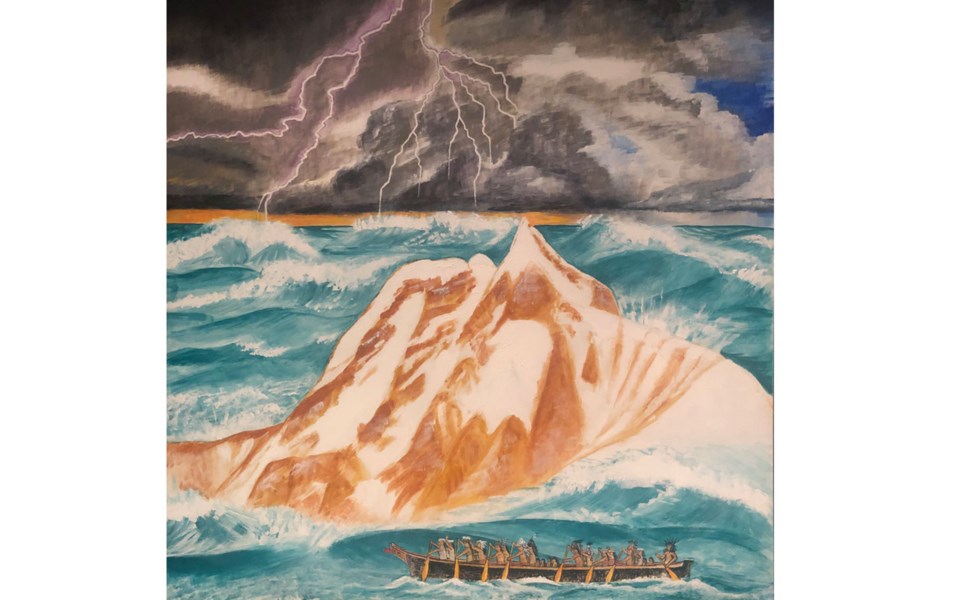Chief Ian Campbell, a hereditary chief of the Squamish Nation, has long been making traditional art.
But when the COVID-19 pandemic hit, he finally found himself with the time and opportunity to delve into a different medium—painting.
“I’ve done pieces over the years, but I finally have a studio in my home,” he says. “This year, I thought, ‘Let’s use this space. Let’s put the tools in there I need and finally bring to fruition what I had been envisioning for so many years.’”
What he had been specifically envisioning was a series of paintings that focused on prominent mountains and landmarks in the area, but also illustrated the Squamish Nation mythology around them.
“They’re mountains we see our whole lives and admire their beauty, but few of us know the mythology handed down through millennia—the ancient mythology and history. I wanted to dig deeper into it,” Campbell says.
One example is Mount Garibaldi (a.k.a. Nch’kay). In his painting, it’s “surrounded by rough seas and stormy weather,” he says. “People would be wondering, ‘Why is there an ocean around Mount Garibaldi?’ That leads to a description of post-glaciation when sea levels rose at the time of the great flood. For Squamish Nation, it became a haven.”
Campbell had this idea in mind for many years, but after connecting with Arts Whistler to organize a solo show, he finally had a deadline to make the series happen.
“I started these seven pieces around February or March,” he says. “It was probably around three months of solid painting, which has been keeping me busy during this COVID period of isolation.”
Written in Stone will open at The Gallery at The Maury Young Arts Centre on June 17 and run until June 27, featuring the series of seven pieces. It will also include a dozen mixed media pieces he’s created over the years—some borrowed from private collections for the show—ranging from cedar carving to whale bone carving, textiles, and drums.
“I’ve been studying Squamish Nation tradition my whole life,” he says. “I’ve been wanting to start a resurgence of pieces people wouldn’t normally see; bone combs, war clubs, blanket pins, things you wouldn’t normally see in a gift shop or gallery.”
But his first passion has always been painting—even from a young age.
“I always had that inclination to draw a lot when I was younger,” he says. “I always felt like I wanted to do more with my art.”
Recently, the Vancouver Museum commissioned him to do a painting called Temixw, which depicts over 300 Squamish stories, villages, and ecologic values in it.
“That inspired me to drill down into the map and do the series of paintings focused on Squamish mythology,” he adds.
He hopes the new series is just a starting point.
“Being out on the land as a mountaineer and hunter and having a spiritual connection to the land, it’s exciting for the long term as well,” he says. “It’s a legacy for me that hopefully can teach others and inspire others to look at the richness of Squamish Nation culture.”
For more, visit artswhistler.com/event/summer-spotlights.




